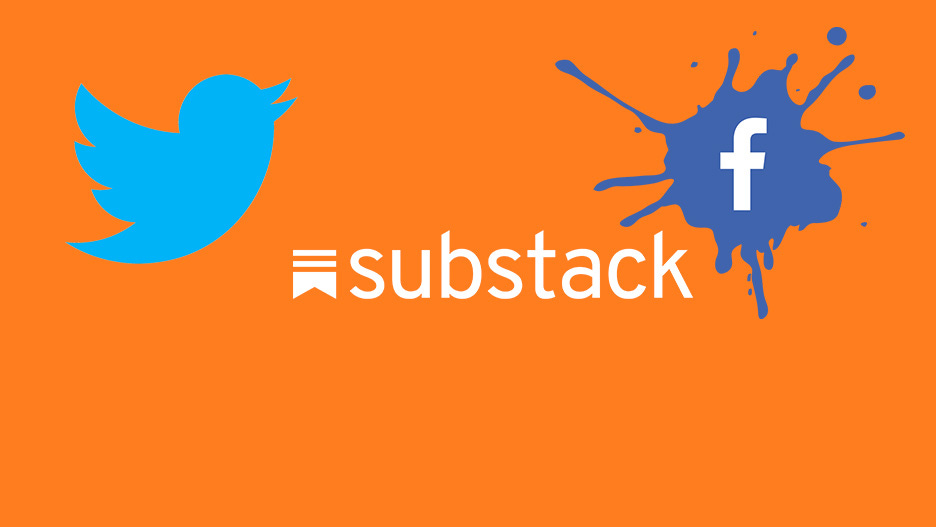What Happens When You Share Your Substack Essay Across Social Media
After a year of publishing on Substack and then sharing across social media I have unintentionally created an interesting data set - let's explore it.
When Facebook Reads Substack: How Platform Shifts Change Reactions
One of the most interesting things about writing in THE BEE is the level of quiet support some ideas get - likes, encouraging comments, paid subscriptions, and true engagement. With this feedback and broad research into a subject, I often feel comforted that I'm pretty close to the centre of mainstream thought on the issue.
And that comfort is needed because the ideologically more extreme views on the issue come in hot - just loaded for bear, with nearly no limits to what they'll write to reject not just the idea and its premises but me personally. I'm mean, I know this just describes every social media post and comment section ever, but on Substack, where I've taken the time to research and write long-form essays, the Facebook-Twitter style rage attack takes on a different flavour - for a start, it’s mostly private.
My recent essay on Canadian bilingualism as an unintentional gatekeeping system is probably the best recent case in point. And interestingly, most of the extreme feedback came from people seeing the essay linked on Facebook, going to substack to read the essay, and then going back to the headline on Facebook to rage, either in DM or in the post. What's happening here?
As a kid growing up in Canada I heard, but just didn’t think much about this whole “The Medium is the Message” thing. But, holy crow, it’s on my mind now. Some new instance of it comes up every day. In this case it is a fascinating mix of medium transition effects, cognitive dissonance, and social media’s outrage incentives at play.
Let’s break it down.
The Medium Transition Effect
People behave differently on different platforms. The way someone engages with an idea on Facebook, Twitter, or Substack isn’t just about their beliefs; it’s about how each medium shapes their reaction.
Facebook & Twitter - These are performance platforms, optimized for speed, reaction, and public visibility. Posts are skimmed, headlines and comments drive engagement, and users often respond based on feeling before engaging with the content.
Substack - A long-form, immersive space. People reading a full essay are often engaging more seriously with the topic. The comments are longer and, more often than not at least, more thoughtful and forgiving. But when a reader comes from Facebook—where they’re used to quick, adversarial responses—and back into that environment, they don’t necessarily shift mindsets. Instead, they may scan for points of outrage rather than actually engaging with the full argument.
Both Facebook and Twitter launched Newsletter sites in the last five years specifically designed to take out Substack - Bulletin and Revue respectively. Both have now closed down and their losses absorbed into the Meta and X-verse. Lesson learned. But what have we learned here?
Cognitive Dissonance in Action
Substack pieces—especially on controversial issues like bilingualism—likely trigger something deeper in readers than just disagreement. They challenge foundational beliefs, things people assume to be true without examining them.
If someone has never considered bilingualism as an exclusionary system, they experience a moment of discomfort:
Option A: Engage with the argument, and consider it seriously.
Option B: Reject it instantly to protect their worldview.
Social media users, especially those trained by the Facebook/Twitter outrage economy, overwhelmingly choose Option B. But instead of engaging rationally, they attack the source—me, or Substack, or whatever—because it’s easier than debating the idea. Or simply pronounce it all to be shit, mic drop, and move on… to whatever else is going on in their lives.
Social Media’s Rage Incentives
Platforms like Facebook encourage anger and reaction - especially on group pages and on the profiles of active users. People aren’t rewarded for nuance; they’re rewarded for dunking, mobbing, and signaling their loyalty to their tribe. And in more crowded alleys like Youtube comments… yikes.
When they see a Substack linked on Facebook, they don’t experience it as a thoughtful essay—they experience it as a provocation. As they would a news headline… if news was allowed on Facebook in Canada.
Instead of processing the argument fully, they go back to the place where the rules of engagement favor snappy, aggressive, and identity-driven responses.
The way I’m describing it—"they read the whole essay, then still went back to Facebook to rage!"—is actually exactly how the platform is designed to work. They might have felt some doubt, some discomfort, but instead of processing it, they took it back to their home turf to reaffirm their prior beliefs with allies.
Why Does This Matter?
It explains why quiet support exists but remains invisible—thoughtful readers, even those who disagree, complexify, or have other ideas, don’t engage in flame wars.
It highlights why certain topics get such disproportionate backlash—the more an idea challenges fundamental beliefs, the more performative resistance it triggers.
It shows how social media shapes engagement in ways that distort real public opinion.
My experience with Substack vs. Facebook/Twitter reactions is an example of medium-driven tribalism. And it’s not unique—this is happening everywhere: politics, science, culture.
The rage isn’t about my argument—it’s about their identity.
Social media trains people to react, not think. And when they’re forced to think, they double down on reaction.






The Bee is one “personal” Substack I always make sure to open. Not every post relates to my interests, but what does goes deep into heart of things that move me.
This post is an example. I’m redirecting many of my national subscription dollars to fine-tuned, far-flung local voices like yours.
Pretty much precisely why I left Facebook and will never go back. I don't care to live that way.